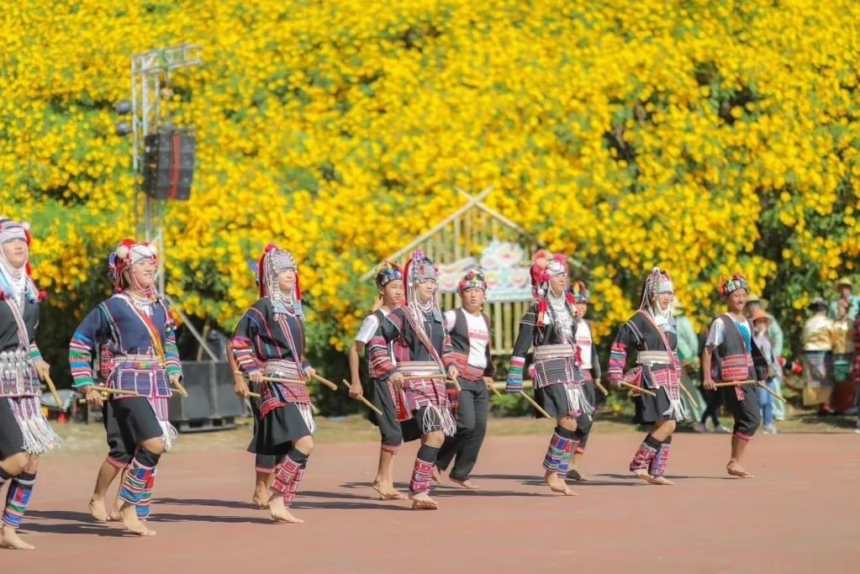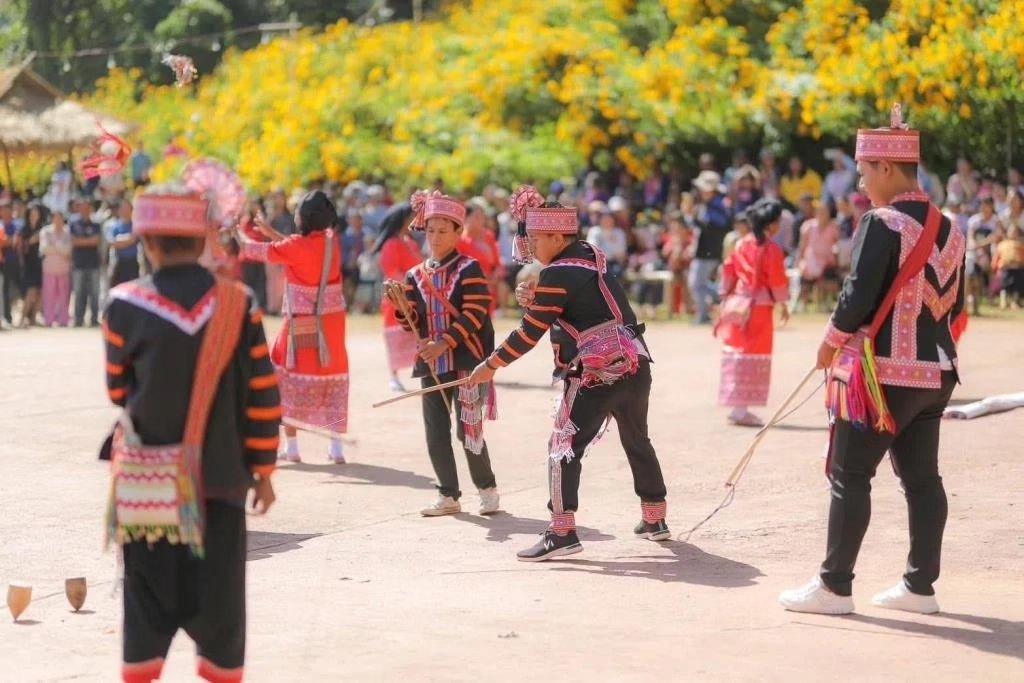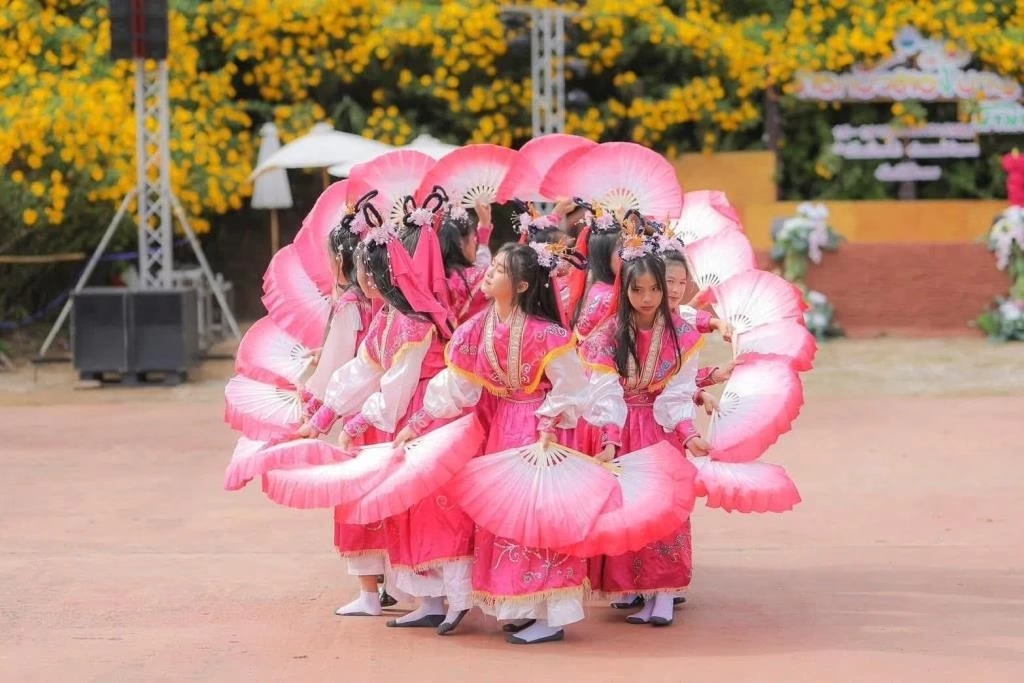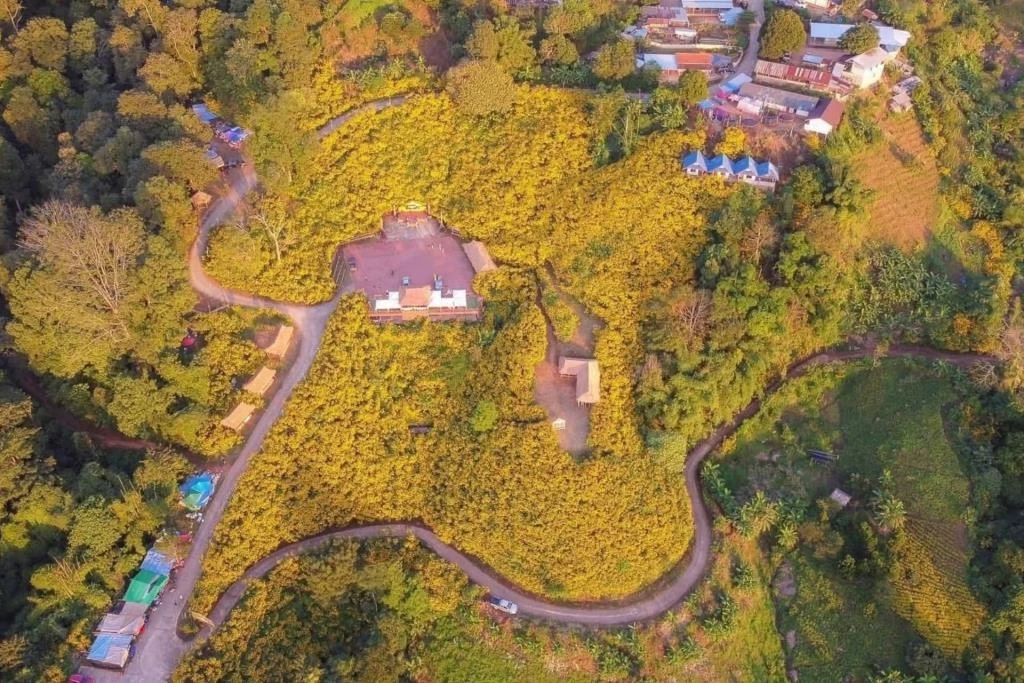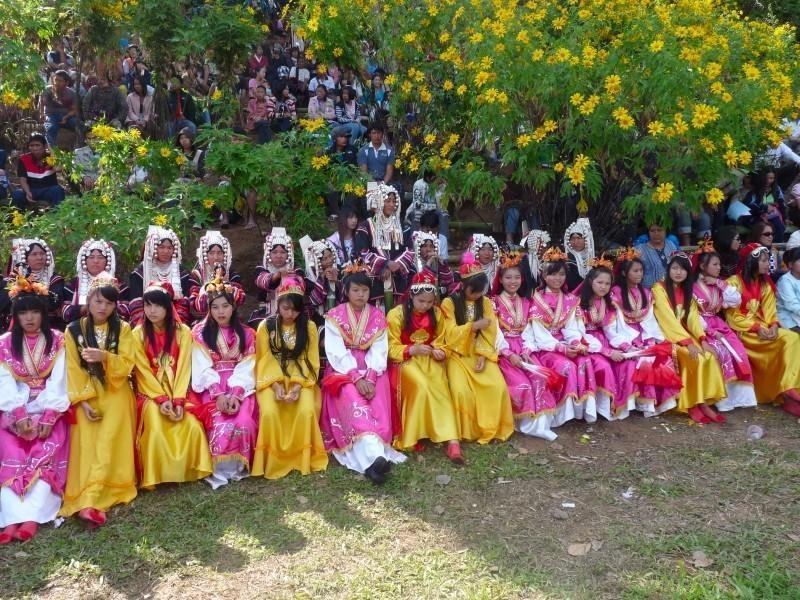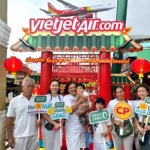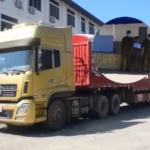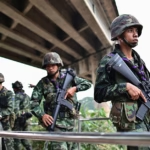CHIANG RAI – As cool November air threads through misty ridgelines, a wave of gold rolls over the Thai-Myanmar frontier. In Ban Hua Mae Kham, tucked inside Doi Hua Mae Kham in Mae Fa Luang District of Chiang Rai, the Mountain Culture Festival brings Mexican sunflowers and highland traditions together from 15 to 16 November 2025.
Often called the Sunflower Symphony, this two-day celebration blends wild scenery with living heritage, perfect for travellers who prefer quiet roads and big views. Imagine hills cloaked in Mexican sunflowers, known locally as Bua Tong. These tough, Central American natives stand around two metres tall and burst into vibrant yellow at the start of the cool season.
More than 1,000 rai, about 400 acres, ripple with petals across terraces and steep slopes. The plants arrived decades ago with missionaries working to restore degraded hillsides. Now they signal the start of high season in the far north, when dawns hover around 10°C, 50°F, and the light feels crisp.
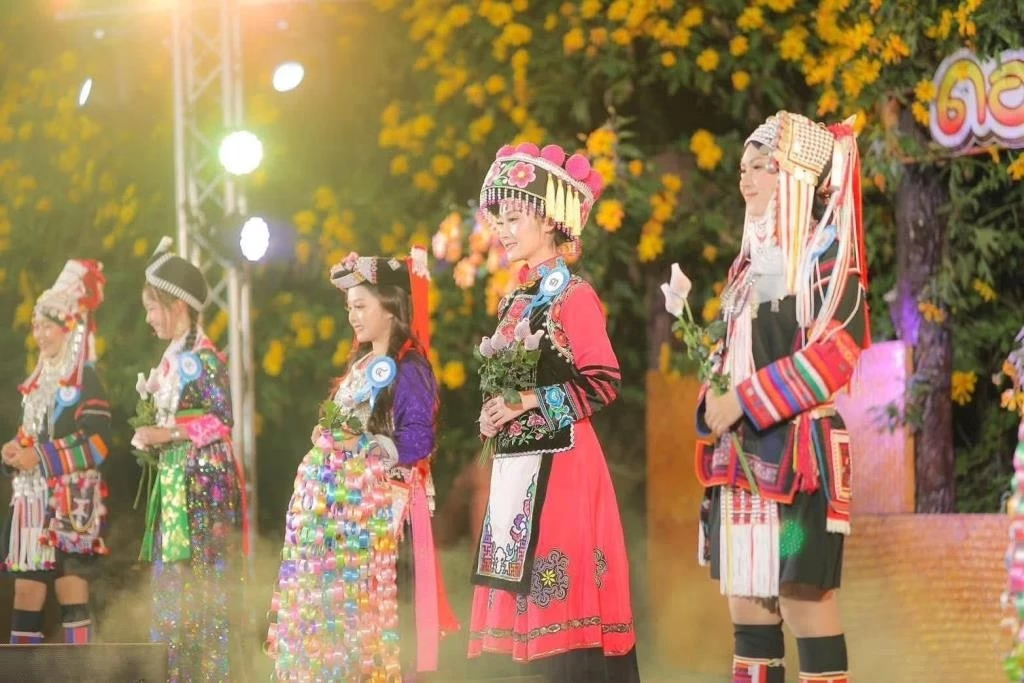
The festival is about far more than flower fields. It honours the people who call Doi Hua Mae Kham home. The village includes a strong Lisu community, along with Akha, Hmong, Lahu, Yao, and Tai Yai roots. Together they form one of Thailand’s largest mixed hill-tribe settlements. At 1,400 to 1,850 metres above sea level, traditions shaped by mountain life continue to thrive.
The settlement sits about 30 kilometres west of Thoed Thai, close to the border with Myanmar. Now in its 33rd year, the event showcases this variety with music, dance, craft, sport, and food. Expect Akha dances with shimmering silver headpieces, Lisu crossbow contests, and Hmong handicraft sessions where needlework patterns carry stories of journeys and family.
The opening ceremony starts on 15 November at 10 a.m., led by village elders in embroidered dress. Performances fill the days, from Yao storytelling beside warming fires to Lahu bamboo dances that mirror the sway of the flowers.
Food stalls serve everyday favourites and festive treats, including sticky rice, naem fermented pork, and salads made with foraged greens. Market tables brim with handmade items. Look for Akha silver jewellery, Hmong batik in deep indigo, and Lisu herbal balms and teas.
Those who want to stretch their legs can join guided walks to Doi Hua Mae Kham Waterfall, a 20-metre drop into cool, green pools. Trails in the Forest Park lead through pockets of pine and cloud forest, with lookouts over the bloom. The contrast is striking, golden fields set against dark evergreens. Photographers will find the best light at first light. Sunrise often reveals fog clinging to the valleys, which makes the petals glow.
Getting there takes time, which keeps the mountains peaceful. From Chiang Rai International Airport, usually about 90 minutes by air from Bangkok, plan around three hours by road. Follow Highway 1 north to Mae Chan, then take Route 1130 toward Doi Mae Salong. At the Ekaw T-junction, turn right and continue through Ban Thoet Thai.
The last 30 kilometres climb into the hills, with bends that reveal tea gardens and distant glints of the Mekong. A sturdy 4×4 is helpful, or share a songthaew for the final stretch. In Thoed Thai, simple stays like Rim Taan Guesthouse offer comfortable rooms at about 800 THB per night.
Homestays in Ban Hua Mae Kham bring visitors into Lisu longhouses, with meals cooked over the hearth and stories shared under bright, clear skies. Those who prefer a touch of comfort can base themselves in Mae Salong, about 60 kilometres away, for tea tastings and quiet inns, then day-trip to the festival.
The mountain carries deeper tales. Many families here moved from opium-affected highlands in the mid-20th century. Over time, local groups have built projects that care for both land and livelihoods. Community planting supports the sunflower bloom and helps prevent erosion.
Women’s cooperatives turn craft income toward schooling and health. Travellers add to this cycle when they buy local goods, hire village guides, and take time to learn. A simple ee-bor, thank you in Lisu, goes a long way. Join a harvest blessing, lend a hand on a trail clean-up, or share tea after a workshop.
Climate shifts can nudge flower timing, so the bloom varies year to year. For 2025, organizers expect a strong display, with peak colour in mid-November. The Mae Salong Nai Subdistrict Administrative Organization advises booking early, as roads are narrow and the event is popular. Check updates via their Facebook page or call 053-730322 for current details, transport tips, and homestay contacts.
Pack for cool mornings and sunny afternoons. A warm layer, hat, sturdy walking shoes, and a refillable bottle will cover most needs. A scarf or light jacket helps on a songthaew ride at dawn. If driving, allow extra time for mountain curves and occasional roadworks.
A few simple ways to travel well:
- Keep to paths through the flowers to protect roots and new growth.
- Ask before taking portraits, then share photos if possible.
- Carry cash in small notes for stalls and songthaews.
- Bring back waste or use village bins if provided.
The Mountain Culture Festival is both a celebration and an invitation. It invites visitors to slow down, walk the fields, and witness skills handed down through generations. It offers a weekend where bright petals meet handwoven cloth, where drums echo across valleys, and where a shared meal brings strangers to the same table.
For those chasing standout shots, the ridgelines above Ban Hua Mae Kham give grand views of the bloom. For those seeking connection, homestays and workshops open doors to everyday mountain life. For families, the event is gentle and welcoming, with plenty of open space and friendly faces.
November in Chiang Rai carries a clear, golden light. On these slopes, the season paints everything bright. The call is simple. Pack a small bag, bring good boots and an open mind. The hills of Doi Hua Mae Kham will do the rest.
Countdown to the mountain culture festival and the full bloom of dok bua tong at Ban Hua Mae Kham, Chiang Rai. The golden fields are ready for photo lovers and nature fans.
Mark your calendar for 15 to 16 November 2568 (2025). The event takes place at the Mexican sunflower fields in Ban Hua Mae Kham, Mae Fa Luang District, Chiang Rai.
Google Maps: https://goo.gl/maps/kLE5UgR7Qetu34Ja7
What to see and do:
- Cultural performances from seven hill tribes
- Hill tribe beauty pageant
- Khantoke-style dinner activities
- Exhibitions and displays of local wisdom and crafts
- Scenic walks through the dok bua tong fields, visits to Doi Hua Mae Kham Waterfall and Doi Hua Mae Kham Arboretum, plus many on-site activities
More information on the Chiang Rai Mountain Culture Festival :
- Mae Salong Nai Subdistrict Administrative Organization: 053-730322, ext. 0
- TAT Chiang Rai Office: 053-744674-5
Plan your visit, catch the peak bloom, and enjoy Chiang Rai’s mountain charm.




